Floating peat island tests our employee problem solving abilities
In mid-May, a large island of peat — approximately 3.7 acres in size — got stuck against the intake structure of Manitoba Hydro’s Keeyask Generating Station, putting the utility’s employee problem-solving skills to the test.
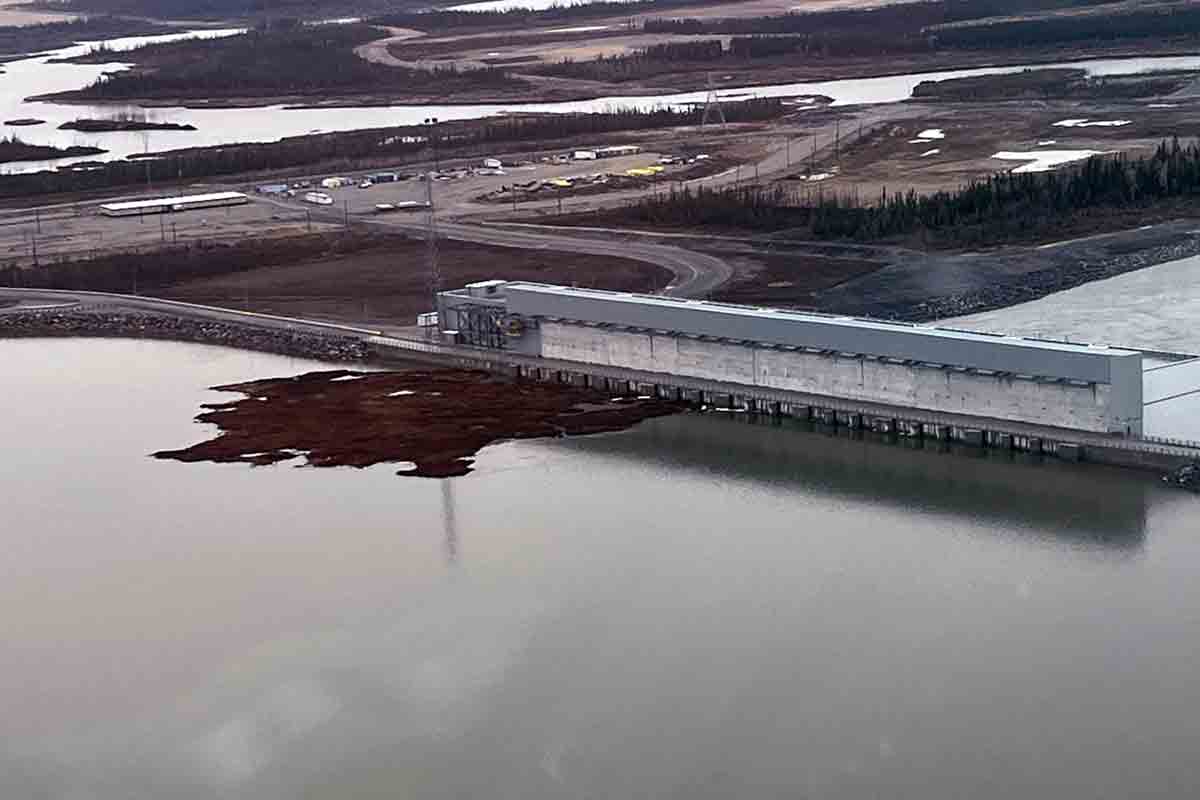
The peat island at Keeyask.
With the completion of Keeyask, the area upstream of the station was turned into a reservoir — approximately 17 square miles in size — that contained a lot of peatlands. Studies performed for the Keeyask environmental impact assessment prior to construction predicted that some of that peat would float up and form islands that could be transported downstream by flow and wind.
“It is usually nice to see that your predictions are correct,” said Wil DeWit, a Sediment and Erosion Studies Engineer with Manitoba Hydro. “But in this case that outcome is tempered by the potential effects of the peat island on the generating station.”
The island was made up of a mass of peat moss, roots, short shrubs, and willows. This type of debris can sometimes pass through the station’s trash racks, but sometimes it can get stuck in those racks and restrict the water flow needed for power generation. In addition, if that debris were to get into the station’s cooling water systems, there is potential for damage to components.
On the morning of May 17, members of Manitoba Hydro’s Northern Boat Patrol were in a first aid and CPR certification course when Ryan Ault, Waterways Programming Department Manager for Manitoba Hydro, received notification of the peat problem. They paused the course and switched focus, using only two pictures and limited details to work with in developing a possible solution.
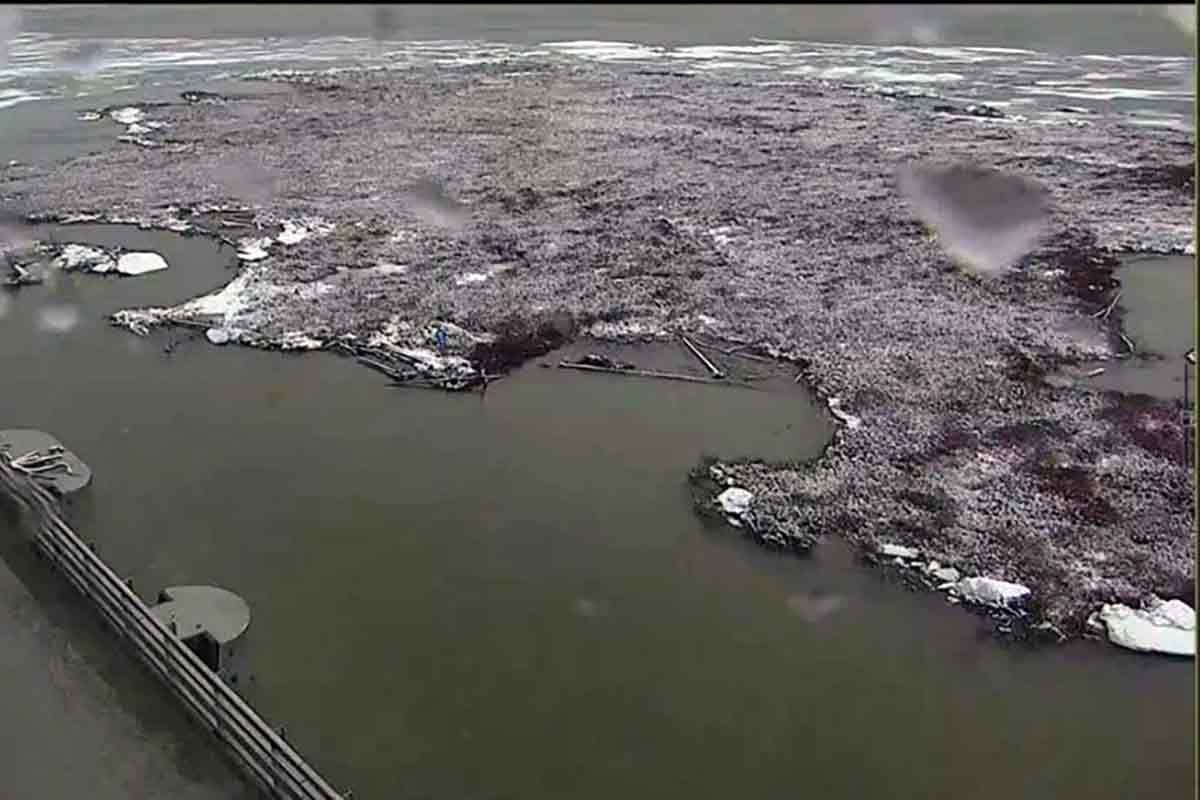
Pictured, above and below: two early aerial shots of the peat island.
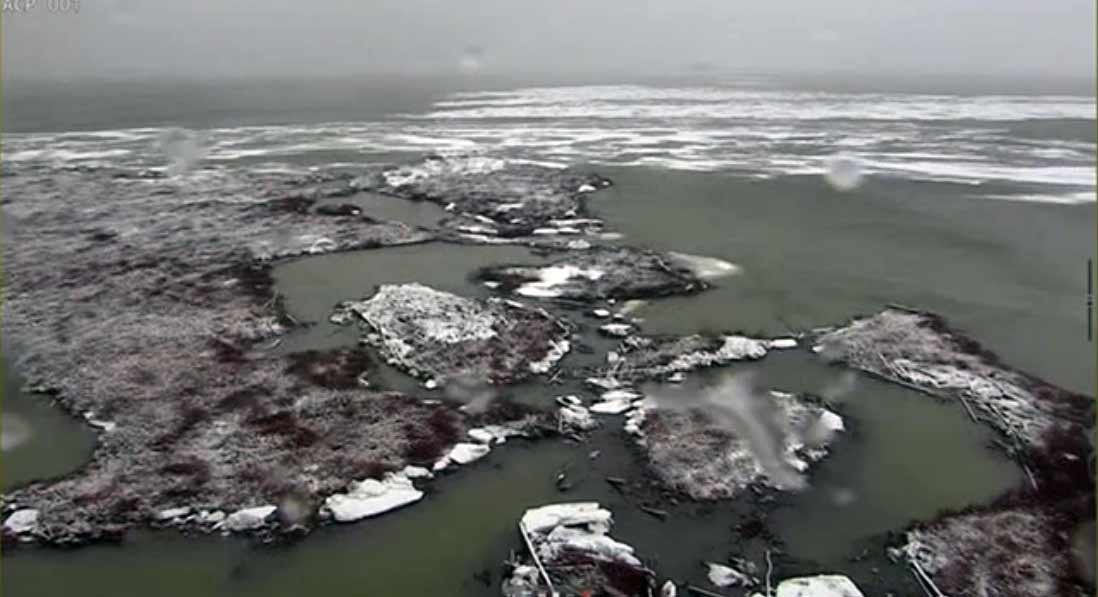
On May 18, in consultation with Tom Playford, Manitoba Hydro’s Northern Generation Department Manager, and his team at Keeyask, Boat Patrol staff — with 18 vessels — came up with a plan to push the mass away from Keeyask’s intake gates.
“We had excellent open dialogue, and it was great to see all the boat patrollers and other staff contribute,” said Ault. “During the planning, we made sure everyone knew that no idea was a silly idea.”
Morrison McIvor, a Utility Supervisor at Manitoba Hydro, suggested using an auger to bore a hole for pulling. Gerald Dysart, a Boat Patroller at Manitoba Hydro suggested putting the anchors on the edge of the island and pulling it away.
They finalized the plan on-site when they took the captains of each boat to a vantage point to assess the island. It was bigger than most had suspected, spanning about 443 feet.
Before the crew left the shore, summer student Vanessa Sandberg and Waterways Programming Coordinator Kristal Baron showed up with lunch and they were soon mobilized into the effort to operate radios. There were several people per boat, each with a designated radio operator.
The crew first tried using eight boats to push the island, but they weren’t strong enough. The team also ran into another problem: due to the force of the motors, the bows of the boats were riding up onto the island. The solution? Secure the boats to the edges of the island using their anchors.
They ended up using 16 boats in total to push the island, excluding two safety boats used to monitor the effort. After five to 10 minutes, the peat island slowly moved away from the structure, but it still wasn’t moving fast enough.
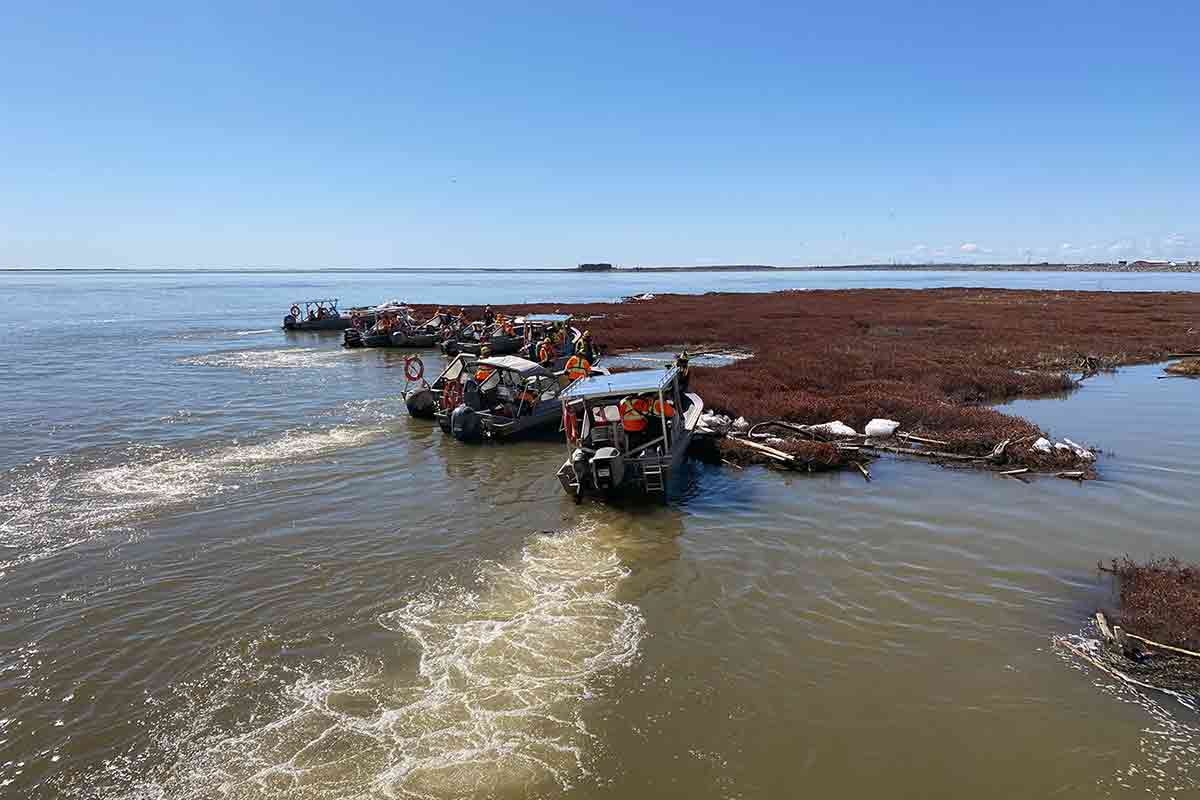
To assist the effort, the station shut down some of its generating units, which reduced the flow of water into the powerhouse, allowing the island to move more quickly.
“There were a lot of cheers when the island actually pulled away from the generating station,” said Ault.

The boats were able to move the island about a mile or so from the station — until the wind changed direction. Going against both the current and the wind brought the boats to a standstill; the team ultimately pushed the island into the nearby south dyke.
A number of days later, the island floated back up against the station.
“Even though the effort to move the peat island away from the powerhouse wasn’t wholly successful, it was a good effort to have everybody come and give it a try,” said Playford.
“The water ballet performed by our boat crews on that day was extraordinary,” said Field Safety Coordinator Greg Szocs. “Communications, logistics and equipment were all balanced with safety, and we were able to take a situation that was new to us all and turn it into a practical team-building experience.”
To clear the peat island away for good, station workers used a clamshell bucket on a crane to lift out the debris and load it into a dump truck. The material was hauled away so it could be used to help with re-vegetation in areas around the station that were disturbed during construction.
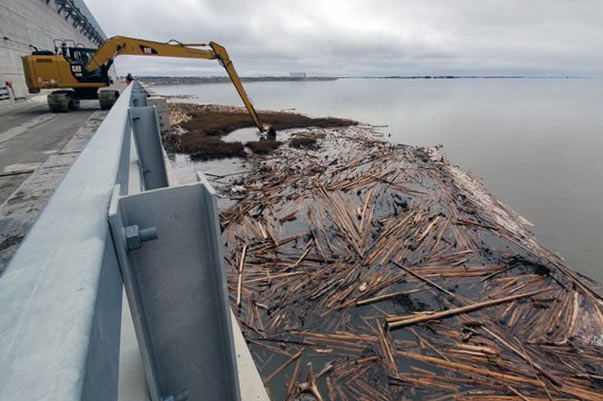
A crane dismantles the island from above.
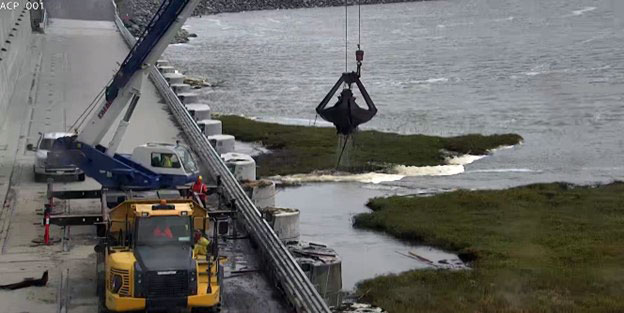
Clamming for peat: a clamshell removes pieces of the island.
